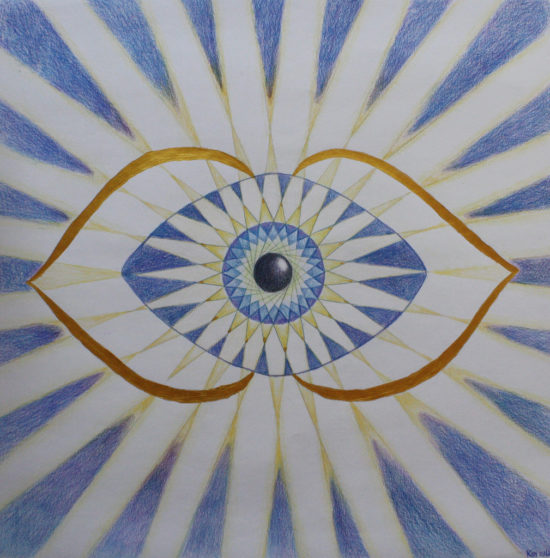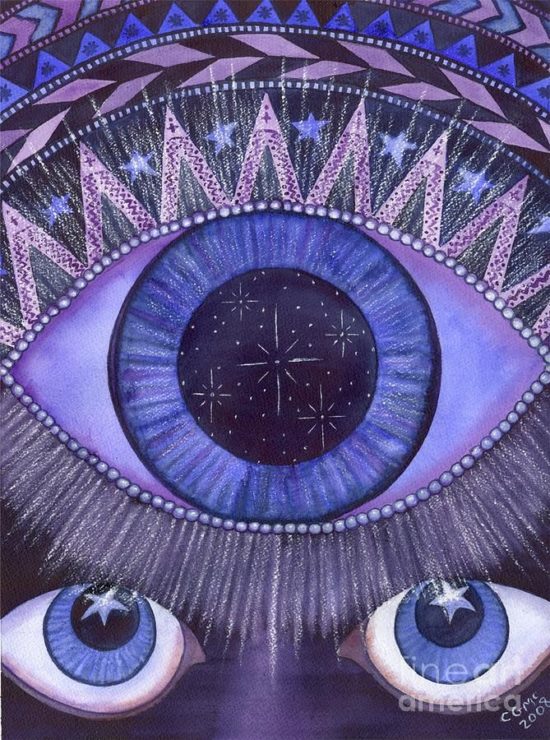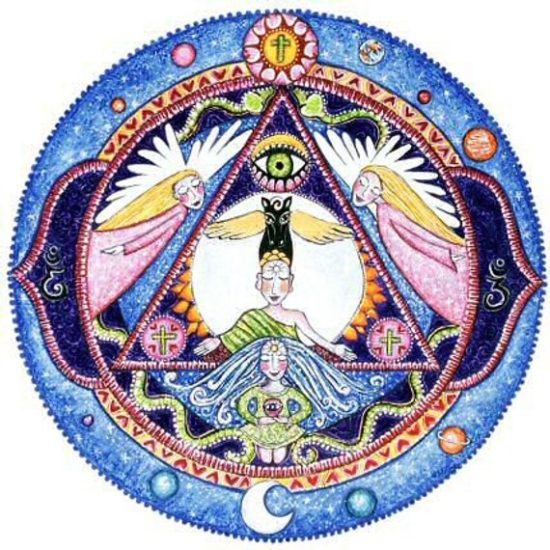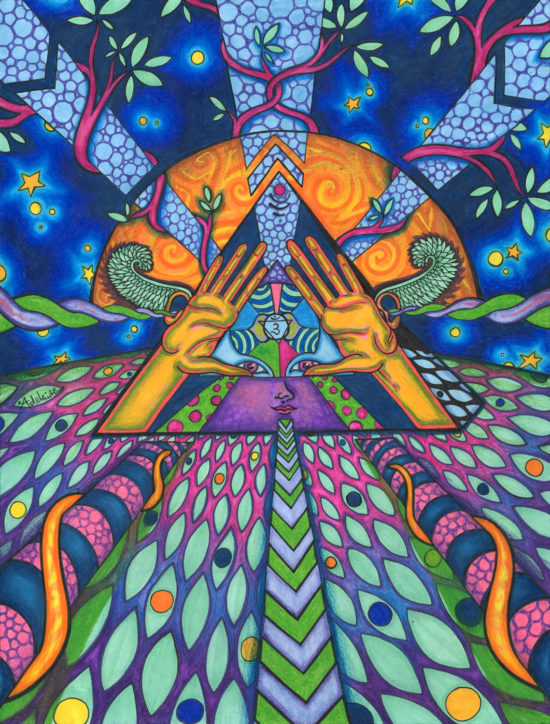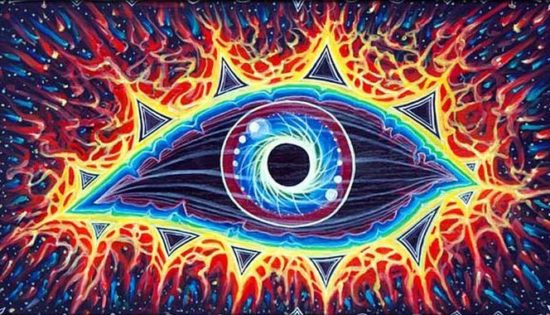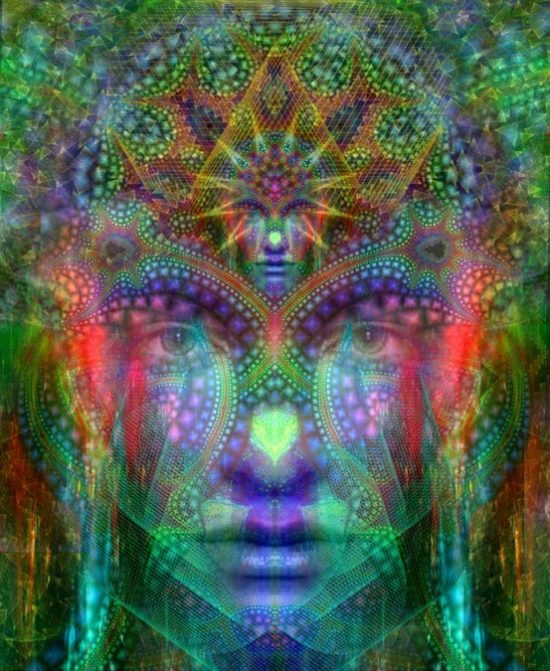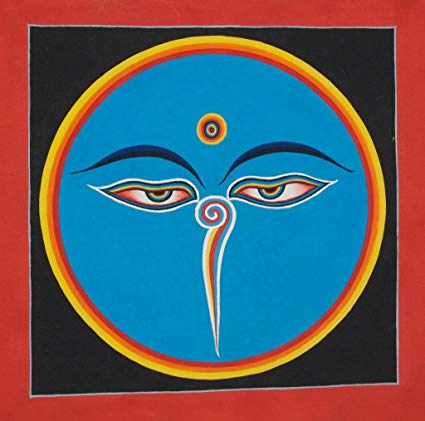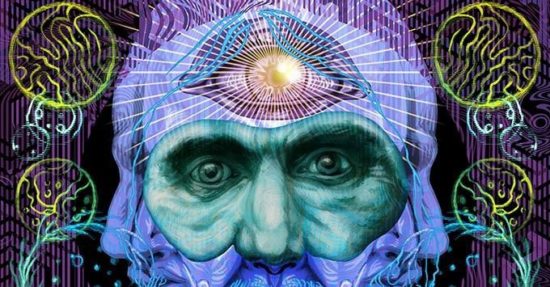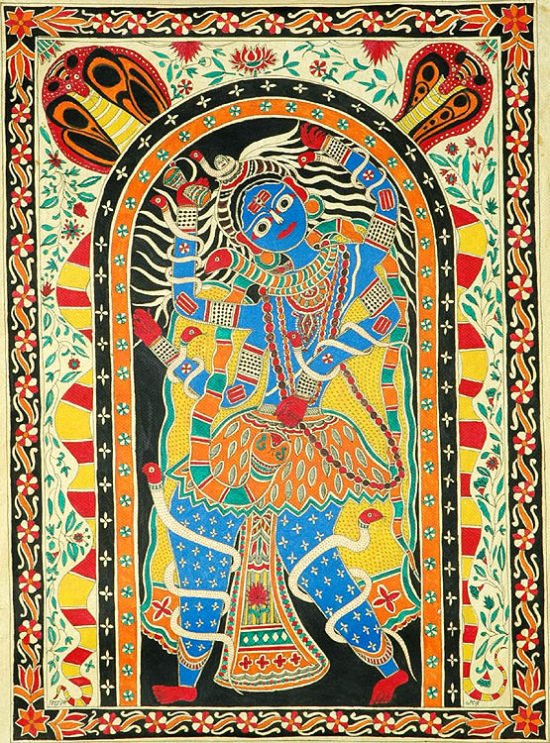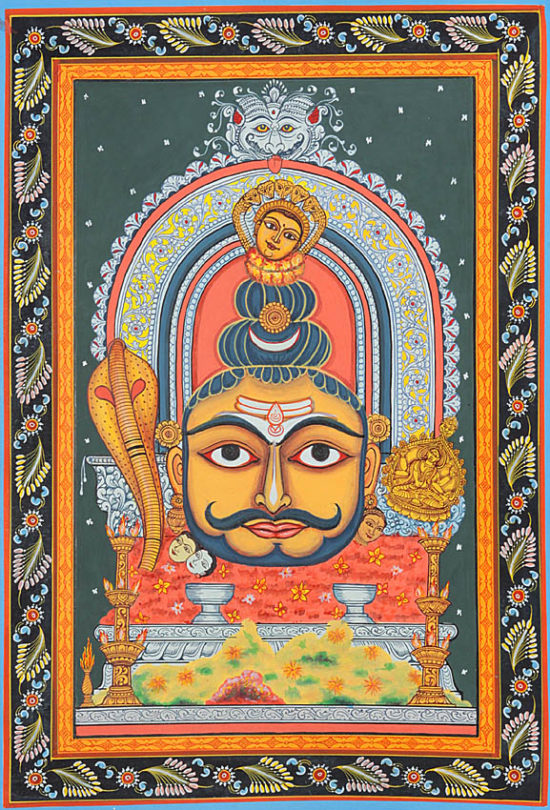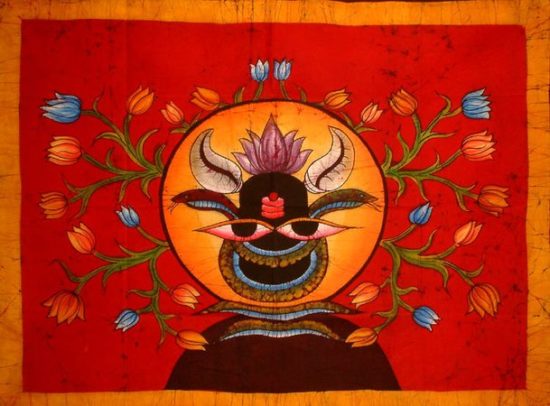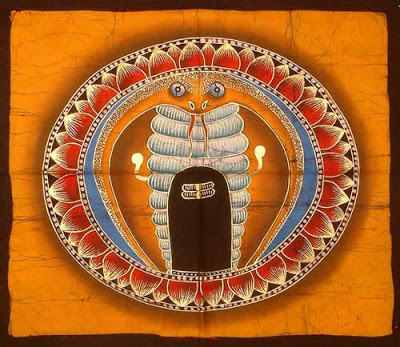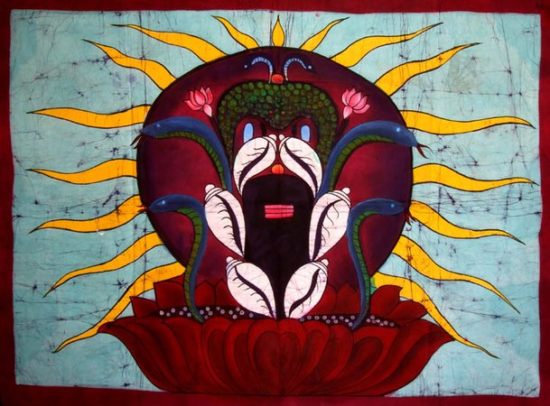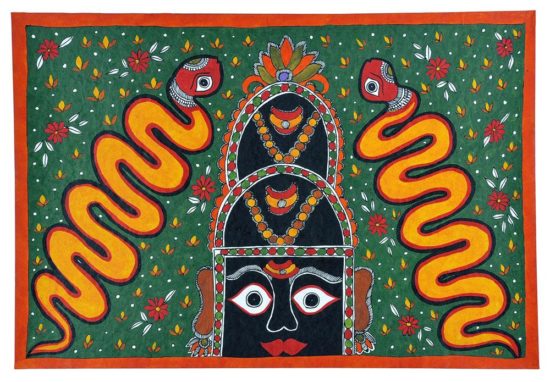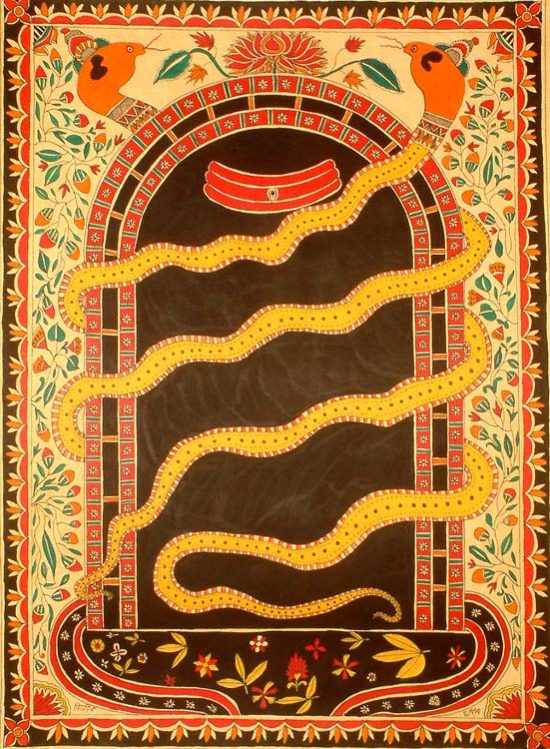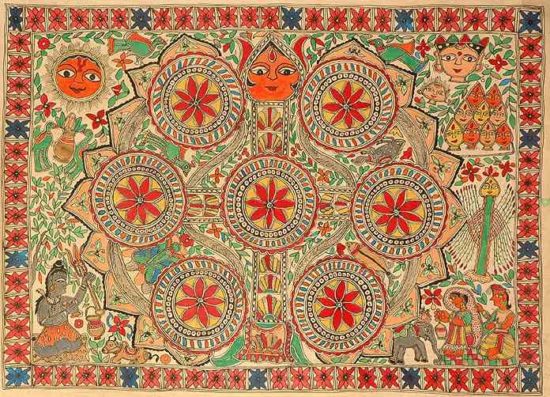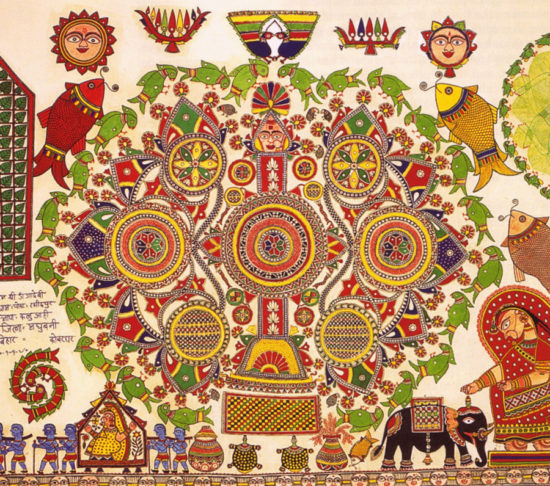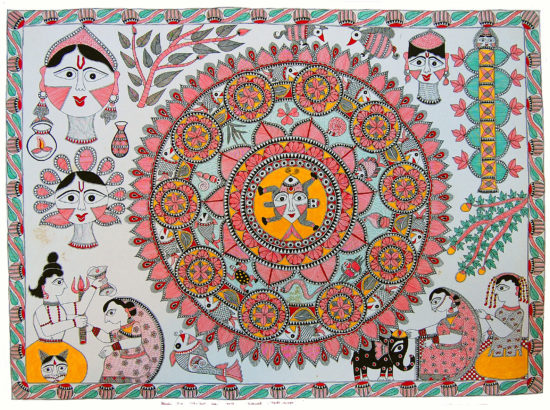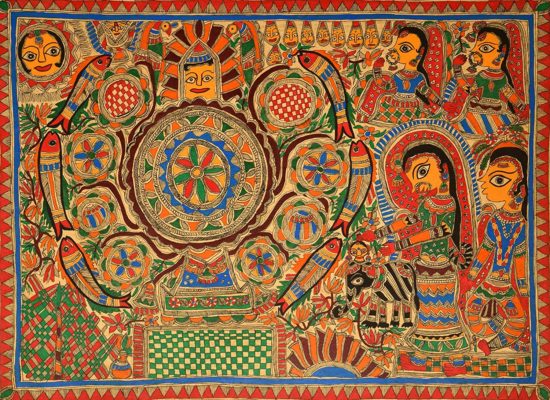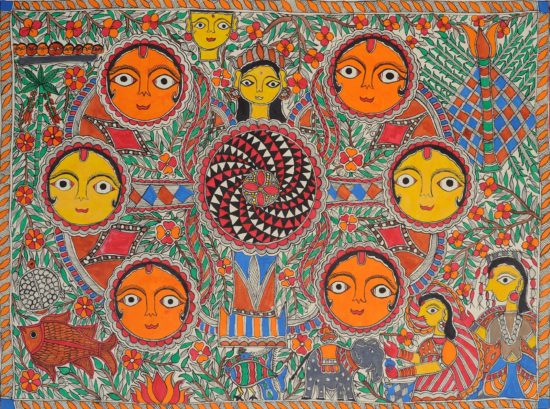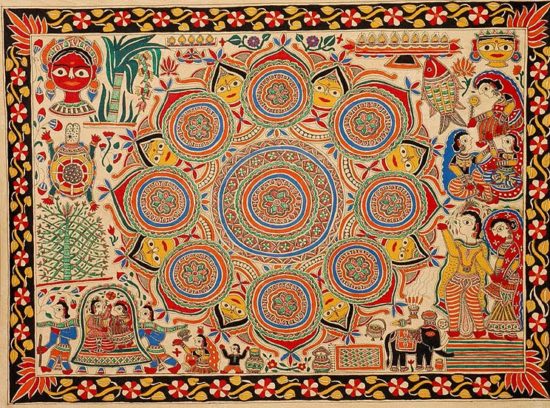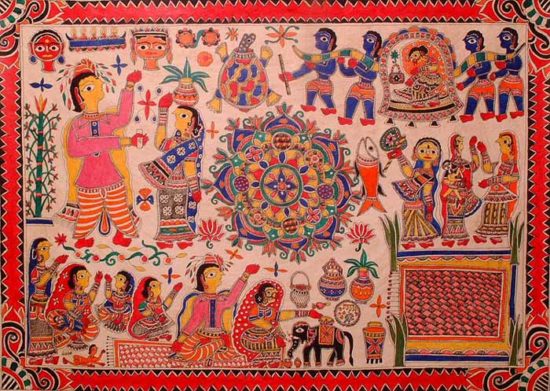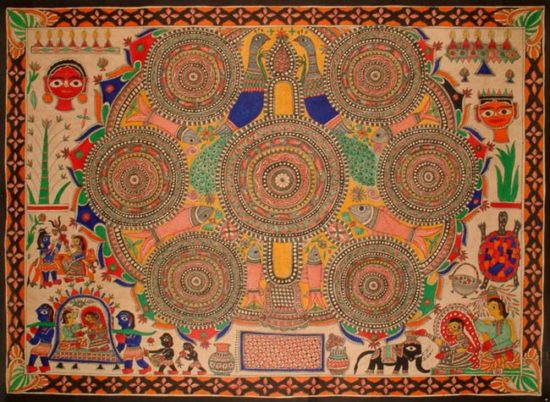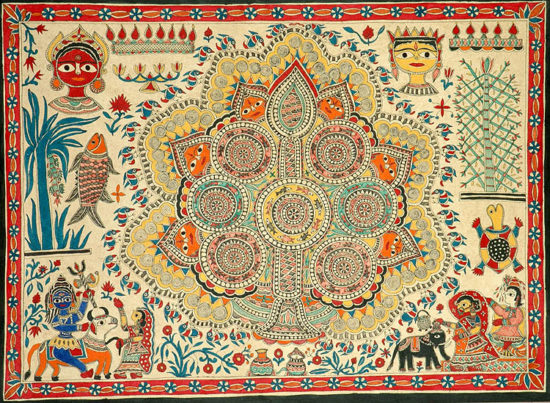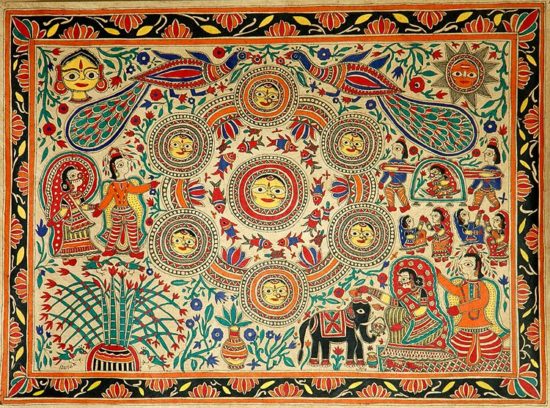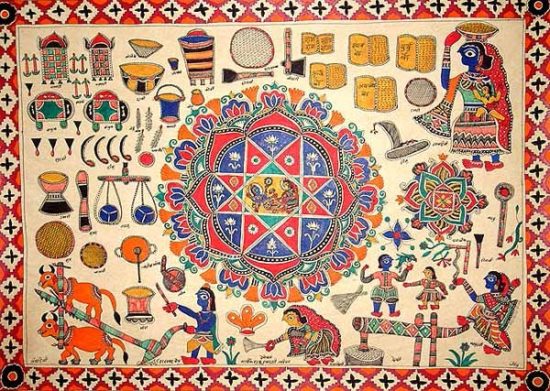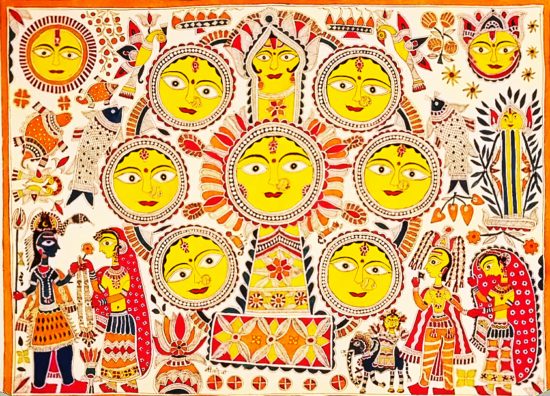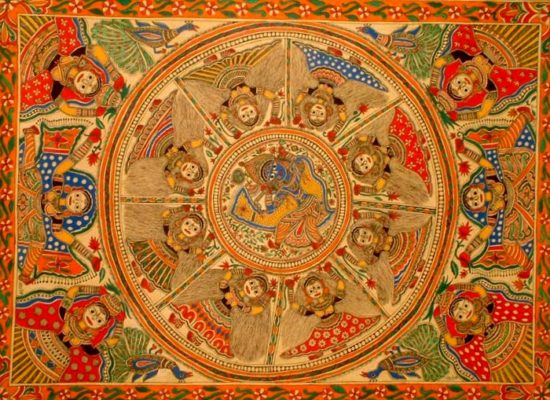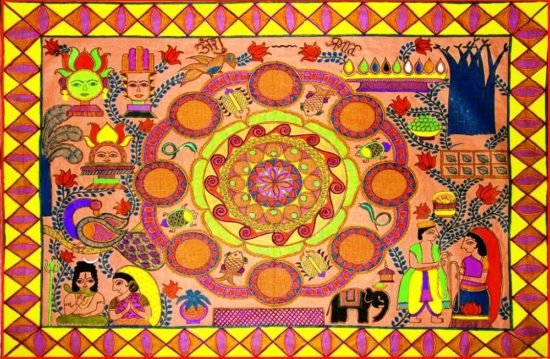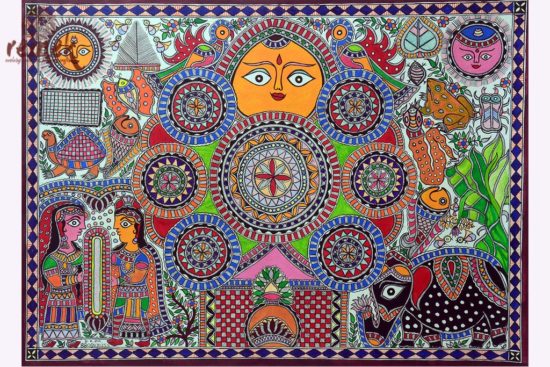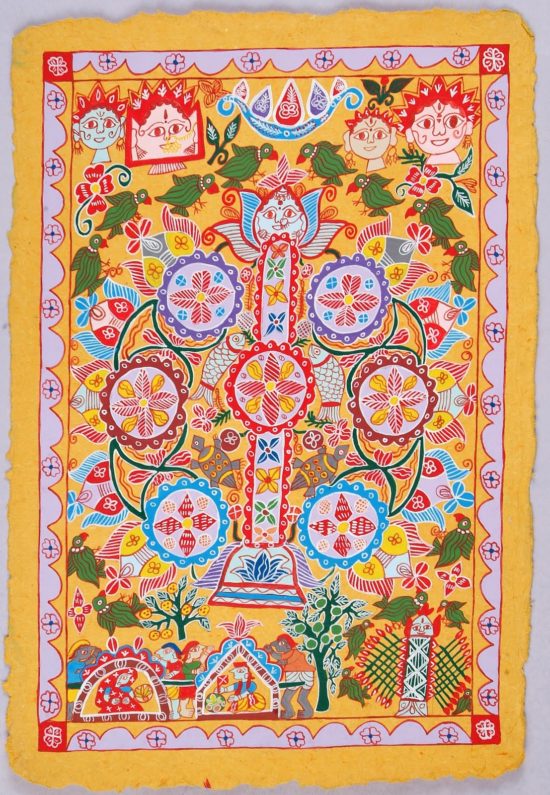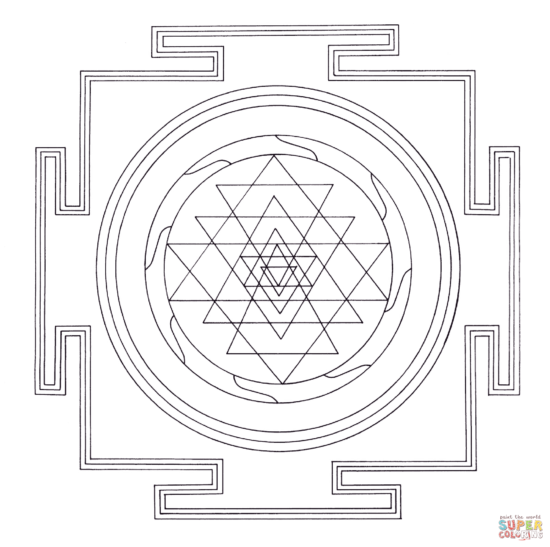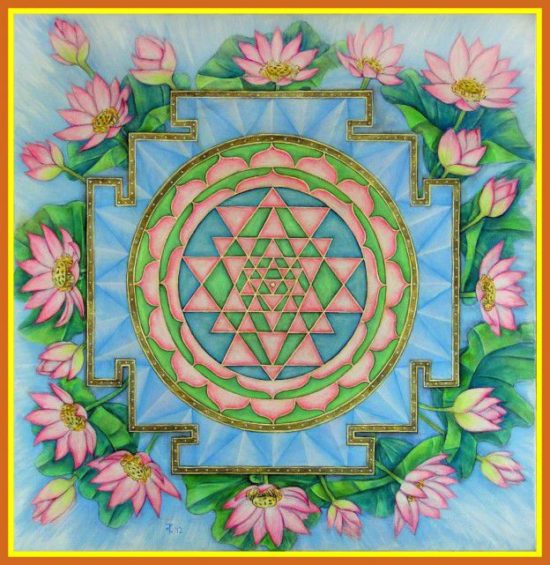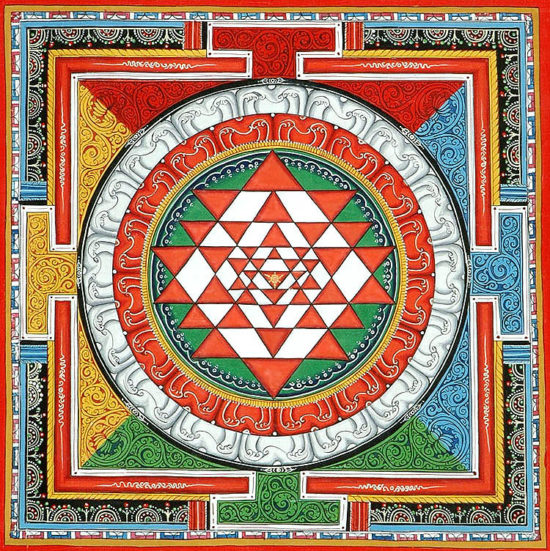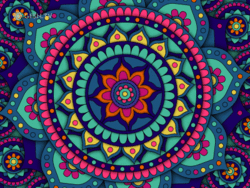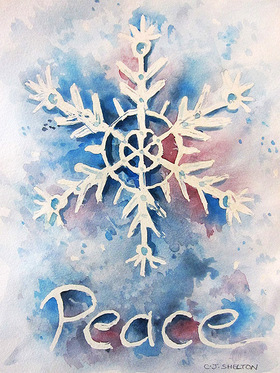Hinduism
Third Eye Mandalas
About The Third Eye
The third eye is known as the gateway to higher consciousness. It may alternately symbolize a state of enlightenment. In Eastern and Western spiritual traditions, the third eye is known as the “inner eye”; the mystical and esoteric concept referring to the “ajna” chakra. The third eye is associated with clairvoyance, out-of-body experiences, visions, and precognition. People who have developed their third eye are known as “seers”.
Hinduism and Buddhism use the third eye as symbolism of enlightenment. It is referred to as “the eye of knowledge” in Indian tradition. East Asian and Indian iconography show the third eye as a dot, eye or mark on the forehead of deities and other enlightened beings. Hindus place a “tilak” between the eyebrows as a representation of the third eye.
There are two small organs in the brain known as the pituitary body and the pineal gland. Medical Science refers to the pineal gland as the “atrophied third eye.” It is said that neither of these glands are atrophied. These glands were once used in the past as a means for man to get in touch with the inner worlds, his way to ingress. These glands will again serve that purpose. Man will again possess the ability of clairvoyance by remembering how to establish a connection to the pineal gland and the pituitary body, but on a much grander scale by connecting the pineal gland and the pituitary body with the cerebrospinal nervous system. Once this is accomplished, it will be under the control of man’s will.
Activating the third eye can be accomplished through meditation. Mastering the art of meditation will help to activate the pineal gland and the pituitary body as well as teaching you to relax and open your mind to all possibilities. Once this is accomplished, clairvoyance is easily reached.
In the charkra systems, the third eye is the sixth chakra and is associated with the color indigo. This chakra is often referred to as the avenue to wisdom. Here we can tap into our own inner wisdom and help to put our own learning experiences into perspective. It is through this open brow chakra that we develop our intuition and receive visual images.
The third eye is the heart of spiritual work. Through the third eye you can communicate what you desire to know about the aspects of your life which have been hidden from you. There would be spiritual darkness without the third eye.
If you are looking to open and clear your third eye you must clean up the heart as most of the energy moving through the third eye comes from the heart. Practicing chakra meditaitons will help you to open and clear all chakras allowing the energy to flow.
The third eye is located in the geometric center of the brain. There is a correlation between this and the Great Pyramids in the center of the physical planet. It is located directly behind the eyes attached to the third ventricle. It controls various biorhythms of the body and is activated by light. The pineal gland “third eye” works harmoniously with the hypothalamus gland which directs thirst, sexual desire, hunger, and the biological clock which determines the aging process.
From: Token Rock
The Shiva Linga Mandala
To give tangible shape to the idea of Shiva is not easy. He is after all, Maheshvara, the greatest embodiment of godhead, the cosmic spirit. Most people prefer to worship a symbol, one that fills the mind with awe and gives shape in the unconscious to the fabulous idea behind the image.
Shiva’s symbol, the linga, is perhaps the simplest conceivable. According to the Matsya Purana, Shiva’s linga is the divine phallus, the source of the soul-seed which contains within it, the essence of the entire cosmos.
The linga itself is an ordinary stone that rises from the fertile earth, reaching out to touch the radiant sky. The serpent represents the coiled energy of Kundalini, the power that enables seeds to germinate and animals to conceive. The serpent is also said to be Ananta Sesha, the great serpent of eternity, on whose coils rests the universe.
In this image, Shiva dances inside his Linga. More authentic Indian Art can be found at Exotic India.
Chanting The Maha Mrityunjaya Mantra
It is said that chanting of Maha Mrityunjaya Mantra(Shiva Mantra) generates divine vibrations that ward off all the negative and evil forces and creates a powerful protective shield protecting the one who chants against accidents and misfortunes of every kind. Recitation of the mantra creates vibration that pulsates through every cell, every molecule of human body and tears away the veil of ignorance.
This mantra ignites a fire within that consumes all negativity and purifies entire system. It is also said to have a strong healing power and can cure diseases declared incurable even by the doctors. Many believe Maha Mrityunjay Mantra to be a mantra that can conquer death and connect human beings to their own inner divinity.
The Maha Mrityunjaya Mantra:
Om Tryamlakam Yajamahe
Sugandhim Pusti – vardhanam
Urva – rukamiva Bandhanan
Mrtyor – muksheeya Ma – amritat
Meaning:
Om. We worship The Three-Eyed Lord Shiva who is fragrant and who increasingly nourishes the devotees. Worshipping him may we be liberated from death for the sake of immortality just as the ripe cucumber easily separates itself from the binding stalk.
Explanation:
The mantra is a prayer to Lord Shiva who is addressed as Sankara and Trayambaka. Sankara is sana (blessings) and Kara (the Giver). Trayambaka is the three eyed one (where the third eye signifies the giver of knowledge, which destroys ignorance and releases us from the cycle of death and rebirth).
~Desktop wallpaper by Shirley Gibson
Fertility Mandalas
These beautiful batik mandala paintings depict the Shiva Linga encompassed by the Lotus Flower. The Linga is representative of the “divine phallus” and fertility. The Lotus symbolizes … and the serpent represents the the power that enables seeds to germinate and animals to conceive. More batik paintings can be found at Exotic India.
Madhubani Marriage Mandalas
Kohbar Painting or simply Kohbar is auspicious marriage diagram, a traditional Madhubani painting design made by women from Madhubani and Mithila region on the occasion of wedding. In Mithila region, a room which is used to perform ritual activities is termed as Kohbar and the painting painted on the wall is termed as Kohbar. More info here: About Madhubani Marriage Mandala Art.
About Madhubani Marriage Mandala Art
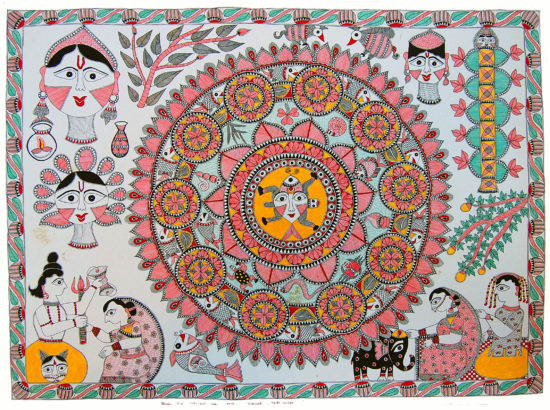 Perhaps the best known genre of Indian folk paintings are the Mithila (also called Madhubani) paintings from the Mithila region of Bihar state. For centuries the women of Mithila have decorated the walls of their houses with intricate, linear designs on the occasion of marriages and other ceremonies.
Perhaps the best known genre of Indian folk paintings are the Mithila (also called Madhubani) paintings from the Mithila region of Bihar state. For centuries the women of Mithila have decorated the walls of their houses with intricate, linear designs on the occasion of marriages and other ceremonies.
Painting is a key part of the education of Mithila women, culminating in the painting of the walls of the kohbar, or nuptial chamber on the occasion of a wedding. The kohbar ghar paintings are based on mythological, folk themes and tantric symbolism, though the central theme is invariably love and fertility.
The major part of the painting has a circle of yantras representing different gods and goddesses. It is the influence of Tantra on the religious scene. The Kali Yantra, Sri Yantra etc. form the conglomeration of yantras, akin to mandalas, a symbol in Tantric art. Around the yantras are depictions of marriage rituals.
On either side of this central motif are the faces of the bride and the bridegroom. The auspicious kalas, fish and turtle, symbolic of fertility are also painted around the outside of the mandala, as are symbols of prosperity and longevity such as the elephant, tree of life, and bamboo.
The bamboo tree, fish and turtle portrayed in the paintings point to the earthly pleasures which find culmination in marital relationship. The lion expresses male energy and the peacock, the female beauty; the fish and the turtle are symbols of proliferation and fertility.
These kohbar paintings often have a lotus motif pierced by a bamboo shaft representing sexual union of the bride and the bridegroom. Parrots, which represent the lovers, are often painted around the rim of the central lotus mandala.
The lower half of the painting is usually narrative in nature, showing the couple performing various religious ceremonies. Here, too, are painted images of the bridegroom in a palanquin followed by another one carrying the bride to his home.
These kind of kohabar pictures abound on the walls of Madhubani villagers, which are later layered and pictures of other auspicious objects appear once the marriage rituals are over.
The contemporary art of mithila painting was born in the early 1960’s, following the terrible Bihar famine. The women of Mithila were encouraged to apply their painting skills to paper as a means of supplementing their meager incomes. Once applied to a portable and thus more visible medium, the skills of the Mithila women were quickly recognized. The work was enthusiastically bought by tourists and folk art collectors alike. As with the wall paintings, these individual works are still painted with natural plant and mineral-derived colors, using bamboo twigs in lieu of brush or pen.
Over the ensuing forty years a wide range of styles and qualities of Mithila art have evolved, with styles differentiated by region and caste – particularly the Brahmin, Kayastha and Harijan castes. Many individual artists have emerged with distinctive individual styles.
Sri Yantra Mandala To Color
Sri Yantra Mandala Meditation
The secret key to using Yantras in meditation is Resonance. The process of Resonance is established by mental focus on the image of the Yantra. As long as the mind is tuned into the specific mood associated to that Yantra, the energy flows, but when the Resonance is stopped, the energy disappears.
Instructions for Shri Yantra Mandala meditation:
- Hang the Shri Yantra mandala on a wall facing North or East, placing the center of the Yantra at the level of your eyes.
- Adopt your favorite posture or, if you want, sit on a chair maintaining a straight spine.
- Breathe in through the nose and out through the mouth, but do not force at all, just let the breath flow normally.
- Look into the center of the Yantra, trying to blink as rarely as possible; you don’t want to look at the particular details of the Yantra, just keep your sight right in the center and observe the whole Yantra at once.
This exercise should last at least 15-30 minutes every day; the experience will be indescribable.
After at least seven days of Shri Yantra Mandala meditation you will be able to tap into the same yantric energy even without a Yantra (at the beginning you may fix your sight on an exterior or imaginary point or evoke the Yantra with your eyes closed)
When executing this technique it is recommended that we maintain a state of aspiration and intense longing for experiencing the beatific energies of the consciousness.
In superior phases the shri Yantra Mandala absorbs the practitioner’s complete attention, and he can no longer tell if the Yantra is within himself or if he is within the Yantra; this is the state of nonduality.
The yantra image in this post can be enlarged (click on it) copied, and printed, and then used for this meditation.
Credits and Links:
- Lotus Mandala by Sasha Tovstik found here
Sri Yantra Mandala
The Holi Sri Yantra, also known as Sri Chakra, is a very important symbol of the Hindu philosophy known as Tantra. It is composed by nine triangles of different size overlapping with one another.
The upper side of the diagram symbolizes Shiva and the masculine, while the bottom part represents Shakti, the Feminine divine also depicted in the Yoni Yantra Mandala.
The Sri Yantra portrait the expansion of the universe starting from the center of the mandala and describing the union of feminine and masculine energy.
This Mandala is a great visual aid to reach higher states of consciousness and deep meditation.
Credits and Links:
- Mandala from the Traditional Art of Nepal
